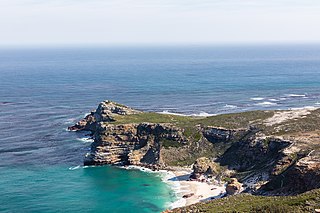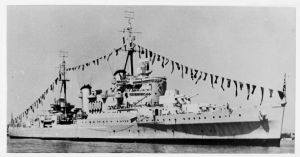
The seventh HMS Newcastle was a Town-class light cruiser of the Royal Navy. She belonged to the Southampton subclass. In the Second World War following extensive battle damage sustained in the Mediterranean, she spent some time being repaired in New York. She also saw action in the Korean War.
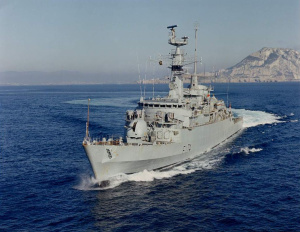
HMS Alacrity was a Type 21 frigate of the Royal Navy.

Glenlee is a steel-hulled three-masted barque, built in 1896 for Glasgow owners, trading as a cargo ship. From 1922 she was a sail training ship in the Spanish Navy. She is now a museum ship at the Riverside Museum on Pointhouse Quay, Glasgow, known as The Tall Ship at Glasgow Harbour.

Tradewind is a Dutch topsail schooner. She was built in the Netherlands in 1911 as a herring lugger named Sophie Theresia.
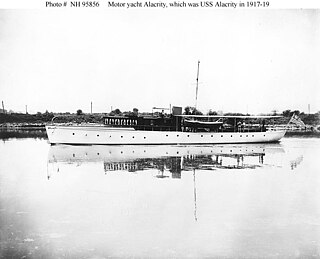
USS Alacrity (SP-206) was a yacht built by Pusey & Jones at Wilmington, Delaware for W. A. Bradford in 1910 then sold to John H. Blodgett of Boston.
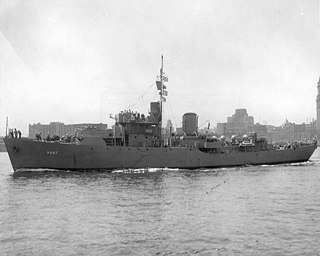
USS Alacrity (PG-87) was an Action-class patrol boat acquired by the United States Navy for the task of patrolling American coastal waters during World War II.

USS Alacrity (AM-520/MSO-520) was an Ability-class minesweeper acquired by the United States Navy for the task of removing mines that had been placed in the water to prevent the safe passage of ships.

USS Texan (ID-1354) was a United States Navy cargo ship and troop transport in commission from 1918 to 1919.

USS Cape May (ID-3520) was a United States Navy cargo ship and troop transport in commission from 1918 to 1919.
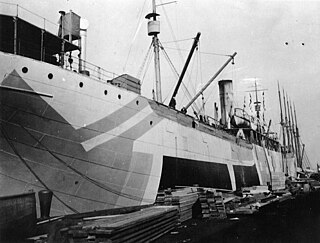
USS Keresaspa (ID-1484) was a United States Navy cargo ship in commission from 1918 to 1919.

HMS Alacrity was a Cruizer-class brig-sloop built by William Rowe at Newcastle and launched in 1806. She served in the Baltic and was at the capture of Copenhagen in 1807. She captured a large privateer before herself falling victim to a French man-of-war in 1811 in an action in which her captain failed to distinguish himself. She then served in the French navy until she was broken up in 1822.
Minna was a 1,544 GRT cargo ship that was built in 1922 by Nylands Verksted, Kristiania, Norway for Swedish owners. In 1934, she was sold and renamed Britt. In 1939, she was captured by the Kriegsmarine and sold to German owners in 1940 and was renamed Leba. In 1945, she was seized by the Allies and passed to the Ministry of War Transport(MoWT). She was renamed Empire Conavon and was sold in 1947 to a British company and was renamed Baltkon. She served until 1959 when she was scrapped.
USS West Mead (ID-3548), also spelled Westmead, was a United States Navy cargo ship in commission from 1918 to 1919.

HMAS Koolonga was a 4,260 gross tons cargo ship built by Sunderland Shipbuilding Company, South Dock Sunderland, England, in 1914 and bought by McIlwraith, McEacharn Line Pty Ltd, Melbourne and named SS Koolonga. She was requisitioned by the Royal Australian Navy on 6 August 1914, as a collier and supply ship. She was returned to her owners in late 1915. She was sold in 1937 to Madrigal & Company, Philippines and renamed Paz. She was scuttled during the Second World War at Sourabaya Harbour in 1942 and was later salvaged by the Imperial Japanese and renamed Hatsu Maru. While at anchor in Manila Bay, Philippines on 13 November 1944, she was attacked by United States Navy carrier aircraft and was sunk.

HMAS Mallina was a 3,213 GRT cargo ship built by Harland & Wolff, Belfast in 1909 as Mallina for the Australian United Steam Navigation Company for the Rockhampton to Sydney cargo route. She was requisitioned by the Royal Australian Navy in 1914, as a store carrier and collier. She was returned to her owners in 1915. She was sold in 1935 to Machida Shokai Kisen Kaisha, Japan and renamed Seiko Maru, before being sold to Kita Nippon Kisen Kaisha and renamed Siberia Maru No. 3, which was later shortened to Siberian Maru. While steaming in the Sulu Sea, Philippines on 24 September 1944, she was attacked by American aircraft of Task Force 38 and sunk with the loss of 158 of the 2,382 people on board.

HMS Alacrity was a modified Black Swan-class sloop of the Royal Navy. She was built for service as a convoy escort during the Second World War, but was completed too late to see action. She did subsequently take part in the Korean War between 1950 and 1952. She was scrapped in 1956.

Kuroshio Maru was a tanker that was built in 1938 for Japanese owners. She was chartered by the Imperial Japanese Navy and Imperial Japanese Army during World War II: the ship was sunk in January 1945 at Takao, Formosa by American aircraft. Salvaged in 1946, she was allocated as a war prize to China and renamed Yung Hao, but was forced to remain at Hong Kong by the British. She was requisitioned by the Admiralty during the Korean War and allocated to the Royal Fleet Auxiliary. She was to have been named RFA Surf Pilot but due to her poor condition she did not serve in the Royal Fleet Auxiliary. She served as Surf Pilot, a tender to HMS Terror until 1958 and was subsequently scuttled off Pulau Aur, Malaya in 1960.
Several ships have borne the name Cambridge for Cambridge:
Alacrity was launched at Newcastle-on-Tyne in 1814. New owners transferred her registry to London and she then spent much of her career sailing between Britain and the Cape of Good Hope, sometimes going on to India. She made at least one voyage to New South Wales. New owners in 1829 returned her registry to Newcastle. She was wrecked in 1830.
This page is based on this
Wikipedia article Text is available under the
CC BY-SA 4.0 license; additional terms may apply.
Images, videos and audio are available under their respective licenses.
